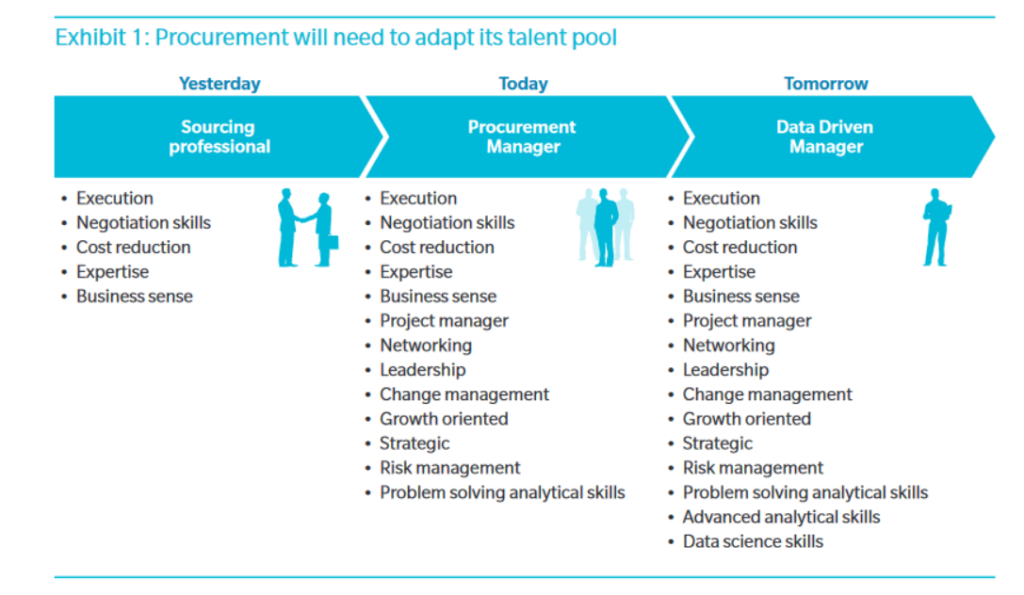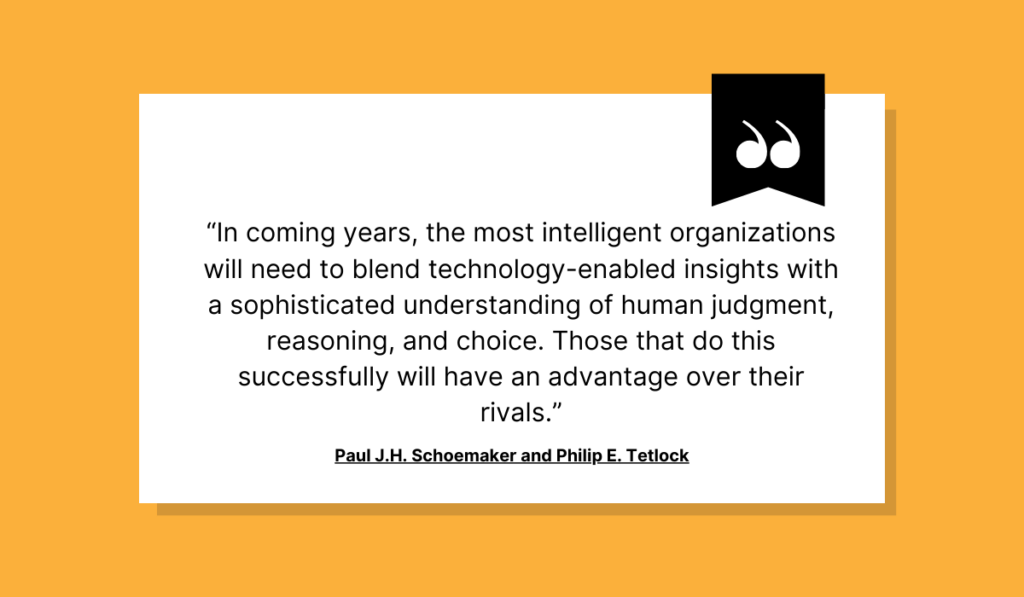How Procurement Teams Can Use Big Data Efficiently


Procurement’s shift toward being data driven is evident, but relying solely on internal datasets is no longer sufficient.
That’s why leveraging big data from various internal and external sources and in different formats has become another imperative for procurement teams.
While it’s true that the sheer volume of procurement data from all these sources can seem daunting at first, this wealth of information can bring your procurement many benefits—from mitigating risks to making fact-based decisions.
That is, if you know how to use big data efficiently.
That’s why we are here.
In this article, we will show you the path to becoming skilled in using big data and turning it into an ally for your procurement.
Let’s begin.
Big data is associated with multiple sources, large quantities, and new technologies.
So, it’s not surprising that it is intimidating for many.
Questions like, what data do we need in the first place, where can we get it, will the data be valuable, and what tools we need can make anyone’s head spin.
However, addressing these questions is easier if you start with smaller amounts of data.
What’s more, once your procurement team masters small data analysis, they will be more equipped to grapple with big data.

Source: Veridion
Let’s see how analyzing small data can prepare you and your team for big data analysis.
You can, for example, start by taking a spreadsheet containing historical purchasing data of a particular product from one supplier.
That is a small dataset from a source you already have within your organization.
It probably includes details such as order quantities, delivery times, and prices. Data is focused and specific.
Then, you can analyze how many times this supplier was reliable in meeting delivery times, as well as assess any correlations between order quantities and pricing.
This simple, but specific and targeted analysis can help your procurement team make informed decisions about negotiating contracts with the supplier in question.
Furthermore, it can demonstrate how data analysis can help you make informed decisions and improve your procurement.
On the other hand, starting with big data without mastering small data analysis first can bring about several negative consequences:
However, all these can be avoided if you first master analyzing small datasets to get the necessary skills and insights before venturing into the complexities of big data.
Once you get proficient in analyzing small datasets and confirm that data analysis can benefit your procurement, you can gradually transition to big data analysis, leveraging more data sources and larger data quantities.
Embarking on a journey of big data analysis without a clear understanding of your objectives is like starting a journey without a destination.
Why?
Because big data analysis is only efficient when you define the why—the specific needs of your procurement and the impact you expect the results to have on your procurement efforts.
On the other hand, if you hop on big data without a proper plan and strategy, it won’t give you any meaningful impact, and you will also probably waste resources for nothing.
Daniel Stratton, senior director of Cisco Meraki, aptly points out another risk of big data analysis without proper strategy—allowing data to mislead you.

Illustration: Veridion / Quote: Forbes
To avoid this pitfall, it is crucial to establish clear procurement objectives that will guide your data analysis.
And the more specific and targeted your objectives are, the easier it will be to identify relevant data sources. On top of that, the analysis will yield more insightful results.
Let’s look at one example of a relevant objective and what specific sources you can consider for collecting and analyzing data.
For instance, if you are collaborating with international suppliers, your objective could be to mitigate currency exchange risks.
For that, you can identify specific data sources:
| Type of sources: | Description: | Data from: |
| INTERNAL | Historical data on currency exchange rates and their impact on your procurement costs for international suppliers | Financial reports and statements, purchase orders, invoices and transaction records that can be found in accounting software |
| EXTERNAL | Market analysis and forecasts on currency trends, geopolitical events, and economic indicators that could affect the exchange rates of key currencies | Reports and statements from financial news publications, economic reports by government agencies, central bank publications on currency exchange rates |
Once you analyze this data, you can use the insights to negotiate favorable terms and pricing, or add arrangements that account for currency exchange risks in supplier contracts.
As you can see, the success of big data analysis hinges on knowing what you are looking for.
Therefore, defining precise procurement objectives will allow you to navigate the vast sea of data more efficiently and get actionable insights that will improve your procurement strategies and their outcomes.
Many procurement professionals still shy away from big data analysis simply because they believe storing this vast amount of data would be too costly for their organization.
But it’s quite the opposite.
Many cloud-based services are designed specifically for this purpose, making data management much more financially accessible than before.
These platforms not only store large datasets but also provide essential tools for fast and efficient processing and analysis of big data.
Moreover, given that big data often exists in unstructured, non-standard formats, the machine learning capabilities and artificial intelligence algorithms within these cloud platforms can derive valuable insights even from data lacking a standardized structure.
Take our tool, Veridion, as an example. It’s an AI-powered supplier sourcing enabler with a vast amount of business data. After collecting the global data, the tool structures the data using natural language processing and other techniques.
That makes data easier to analyze and understand. Veridion can tag, classify, and standardize the data, so it can be easily integrated into different systems.
Here’s why investing in cloud services for big data analytics in procurement is not just advisable but necessary:
These compelling advantages of cloud services make them perfect for storing and analyzing huge datasets without being overly costly.
In fact, only cloud-based platforms can manage big data properly and, as such, are necessary if you want to use big data efficiently.
Integrating your systems is another crucial step on the path to fully harnessing the potential of big data in procurement.
Data originates from various internal and external sources, spanning across multiple systems.
Within your organization, these systems could encompass e-procurement systems, ERPs, accounts payable, and more.
Unfortunately, much of the data is confined within numerous silos, thus limiting accessibility to only a few individuals.
In fact, despite being data driven, up to 39% of organizations have their data scattered across over 50 distinct silos.

Illustration: Veridion / Data: Computer Weekly
This scattered data hinders procurement teams from accessing real-time information that would allow them to make informed decisions.
Additionally, searching for data across multiple systems consumes valuable time and resources that could be better used for strategic tasks.
So, how can you overcome these challenges?
The solution lies in integrating these systems and providing your procurement team with one comprehensive view of accurate, real-time data for analysis.
There are various methods to integrate data within these systems, but we are going to be focusing on two of them—Extract, Transform, Load (ETL), and Data Virtualization.
How you integrate your systems and data within them depends entirely on your data needs.
However, getting one source of accurate data that will be visible across procurement teams and ready to analyze whenever the need occurs is crucial.
After all, only if your data is easily accessible can you use it efficiently.
In the era of big data in procurement, finding the optimal synergy between automation and human expertise has never been more important.
While automation offers efficiency and can automate routine tasks, human insight brings nuanced decision-making to the table.
Striking the right balance is the key to using big data efficiently.
Automation, with its ability to swiftly process vast amounts of data, analyze trends, and execute with precision, is a powerful tool.
However, you still need human expertise to interpret those analysis results and simplify them for others to understand.
After all, only a data analysis expert will know where to look for data in the first place and how to build predictive analytic models that can offer a solution to reach your procurement goals.
This underscores the increasing importance of experts well-versed not only in procurement but also in data analytics.
Back in 2018, Oliver Wyman’s whitepaper foresaw that future procurement experts would need advanced analytics and data science skills alongside negotiation, business sense, and leadership skills.

Source: Oliver Wyman
What was once a futuristic vision is now our reality.
Therefore, it’s essential to collaborate with professionals possessing a multifaceted skill set—individuals who can efficiently navigate both procurement intricacies and data analytics.
As Paul J.H. Schoemaker and Philip E. Tetlock from the University of Pennsylvania state, only this blend of automation and technology with human expertise will ensure a business stands out in the competitive landscape.

Illustration: Veridion / Quote: Sloan Review
In essence, the future belongs to organizations that not only invest in advanced technologies but also nurture a culture where human insights and technological capabilities complement each other seamlessly.
What’s more, only by having experts who possess both procurement and data analytics skills will you ensure the efficient use of big data.
To use big data efficiently, it’s crucial to transform it from sheer numbers and statistics into visually appealing and easily understandable formats.
Moreover, contextualizing the data is essential for ensuring that stakeholders comprehend its significance and how it can be leveraged for informed decision-making.
So, make sure you turn data into compelling visuals like charts and graphs before presenting the analysis results to team members and other stakeholders.
After all, it is precisely how Donald Farmer says in his TechTarget article: “With appropriate data visualizations, we’re all natural data analysts.”
In other words, when you translate raw data into accessible visuals, even those not highly analytically skilled can easily grasp complex information.
When it comes to presenting the data, make sure it is contextualized within the overarching objectives and goals of your procurement strategy.

Illustration: Veridion / Quote: Forbes
By presenting the analysis results in the context of these procurement goals, stakeholders will immediately grasp the connection.
What’s more, they will recognize it as an accurate and tangible tool for decision-making.
In conclusion, visualizing data and presenting it in the context of your procurement goals not only enhances understanding but also lends credibility to the data.
This approach makes the data more accessible and reinforces its value in driving effective decision-making.
So, make sure to visualize and contextualize data before sharing it within the organization.
As you can see, the roadmap to using big data efficiently involves several key steps.
Let’s recap the main points.
Start by getting comfortable with small data analysis to understand its benefits for procurement efficiency. Then, define clear procurement goals to guide your data analysis efforts and generate meaningful insights.
Integrate your systems to have a unified view of your data, and leverage cloud platforms for a comprehensive analysis that includes both internal and external big data.
Finally, transform your raw data into visual insights and present them in the context of your procurement objectives.
In the end, using big data efficiently couldn’t be possible without data experts.
So, find the right balance between automating processes and having skilled individuals who understand your procurement needs.
Once you’ve mastered these steps, you’ll be equipped to use big data efficiently and undoubtedly witness tangible improvements in your procurement efforts.